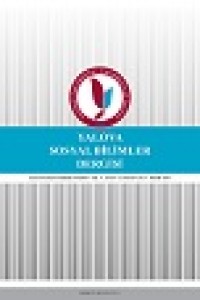Öz
Muhammad al-Kashgari (Mahmûd Qašqarî) was an 11th century Turkish scholar and lexicographer of Turkic languages from Kashgar. His father, Hussayn, was the mayor of Barsgan and related to the Kharhanids ruling dynasty. Mahmud al-Kashgari studied the Turkish dialects of his time and wrote the first comprehensive dictionary of Turkish languages, the Diwan-i Luġat-it Turk in 1072. It was intended for use by the Caliphs of Baghdad, the new, Arabic allies of the Turks. Mahmud Kashgari's comprehensive dictionary contains specimens of old Turkish poetry in the typical form of quatrains, representing all the principal genres: epic, pastoral, didactic, lyric, and elegiac. He traveled widely among the Turkish tribes of his time, and his map shows the locations of dialect groups. He split Turkish into two main dialect groups: the Turks and the Oghuzs. The Oghuzs have been studied here in this article; who the Oghuzs were, where they were living, about their dialectic, the structure of their language, their phonetic and morphology in the Diwan-i Luġat-it Turk.
Anahtar Kelimeler
Öz
Muhammad al-Kaschgari (Mahmud Qašqarî) war ein türkischer Gelehrter 11.
Jahrhundert und Lexikograph der Türksprachen von Kaschgar. Sein Vater, Hussain, war
aus Barsgan und im Zusammenhang mit der Kharhaniden herrschende Dynastie. Mahmud
al-Kaschgari studierte die türkischen Dialekte seiner Zeit und schrieb das erste
umfassende Wörterbuch der Türksprachen, die Diwan-i Lugat-it Türk in 1072. Es wurde
für die Verwendung durch den Kalifen von Bagdad, die neuen, arabischen Verbündeten
der Türken bestimmt. Mahmud Kaschgari das umfassende Wörterbuch enthält Exemplare
der alten türkischen Poesie in der typischen Form der Vierzeiler, repräsentieren alle
wichtigen Genres: Epos, pastoralen, didaktischen, lyrischen und elegischen. Er reiste weit
unter den türkischen Stämme seiner Zeit, und seine Karte zeigt die Standorte der Dialekt-
Gruppen. Er spaltete sich in zwei große türkischen Dialekt-Gruppen: die Türken und die
Oghusen. Die Oghusen wurden hier in diesem Artikel untersucht, wer die Oghusen waren,
wo sie lebten, über ihre Dialektik, die Struktur ihrer Sprachen, Phonetik und Morphologie
in der Diwan-i Lugat-it Türk.
Anahtar Kelimeler
Ayrıntılar
| Birincil Dil | Türkçe |
|---|---|
| Bölüm | Makaleler |
| Yazarlar | |
| Yayımlanma Tarihi | 30 Aralık 2013 |
| Gönderilme Tarihi | 30 Aralık 2013 |
| Yayımlandığı Sayı | Yıl 2013 Cilt: 3 Sayı: 5 |
Kaynak Göster
-


